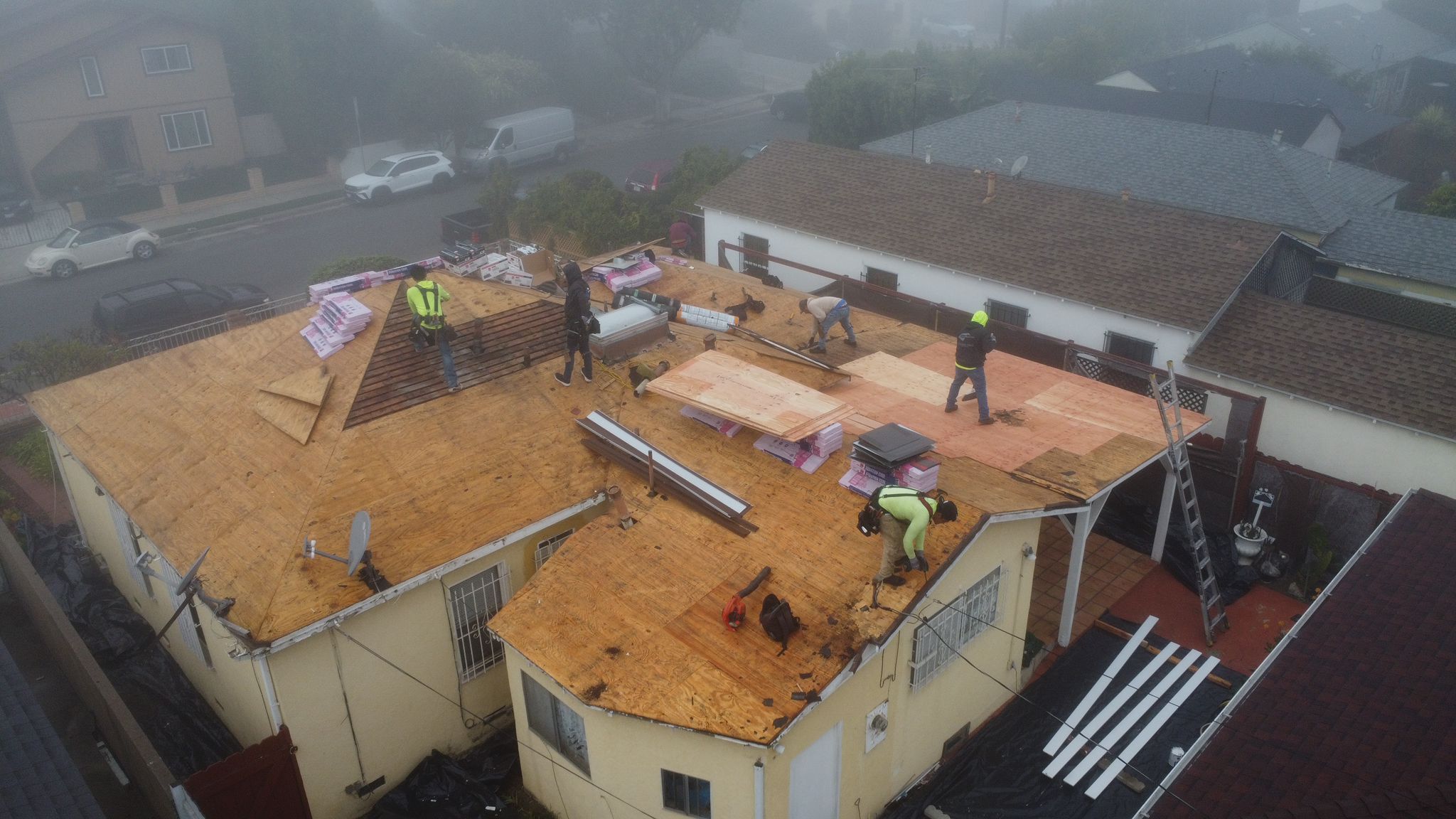If you’re a California homeowner or planning to become one, the question of how long your roof will last has probably crossed your mind. And it should! Your roof isn’t just a layer of protection; it’s your first line of defense against California’s diverse weather conditions. Let’s dive into the factors that influence a roof’s lifespan and explore what you can do to ensure it lasts as long as possible.
The California Climate and Its Impact on Roof Lifespan
California is known for its sunny skies, but it’s not all smooth sailing for roofs here. Depending on where you live—whether it’s the scorching deserts of Southern California, the humid coastal regions, or the chillier mountain areas—your roof faces unique challenges.
For example, extreme heat can warp or crack certain roofing materials, while salt-laden air near the coast speeds up corrosion on metal roofs. In Northern California, heavy rains and occasional snow can test a roof’s waterproofing capabilities. In short, the climate here is as varied as the state itself, and your roof’s durability will depend heavily on the materials used and the maintenance you perform.
Common Roofing Materials and Their Longevity in California
1. Asphalt Shingles
Asphalt shingles are by far the most popular roofing material in California, thanks to their affordability and ease of installation. But how do they hold up over time?
- 3-Tab Shingles: These are the most basic type, with a lifespan of 10-20 years if properly maintained. However, they’re less durable under California’s intense sun and high temperatures.
- Architectural Shingles: A step up from 3-tab, these thicker shingles last around 15-25 years and provide better resistance to heat and UV rays.
- Premium Asphalt Shingles: For those willing to invest more, these can last 20-30 years or longer with proper care.
To extend the life of asphalt shingles, avoid walking on them, keep them free of debris, and ensure proper ventilation to minimize heat buildup.
2. Metal Roofing
Metal roofs are gaining popularity in California, especially in fire-prone areas where their fire-resistant properties shine. Depending on the type of metal used, the lifespan varies:
- Ribbed Metal with Exposed Fasteners: Typically lasts 25-40 years.
- Standing Seam Metal Roofs: Known for their sleek appearance and durability, these can last 30-50 years or more.
- Copper and Zinc Roofs: These premium options can endure over 100 years, making them a long-term investment.
While metal roofs are durable, they require occasional inspections to ensure fasteners and sealants remain intact, especially in regions with high wind or salt exposure.
3. Tile Roofing
Tile roofs, whether made of clay or concrete, are a staple in California, especially in Mediterranean-style homes. Their lifespan is impressive:
- Clay Tiles: Last 50-100 years when properly maintained.
- Concrete Tiles: Slightly less durable, with a lifespan of 40-75 years.
However, the underlayment beneath the tiles—the real hero keeping your home dry—has a shorter lifespan, typically 15-25 years depending on the material. Regular inspections and replacing the underlayment as needed can significantly extend the roof’s overall lifespan.
4. Flat Roofs
Flat roofs are commonly found on modern-style homes and commercial buildings. Their longevity depends on the materials used:
- Built-Up Roofing (BUR): Lasts 20-30 years, with layers of tar and gravel providing protection.
- Membrane Roofing (EPDM, PVC): Can endure 20-35 years when properly maintained.
Flat roofs require regular inspections to ensure drainage systems are functioning and to prevent water pooling, which can lead to leaks and damage.
5. Slate Roofing
Slate roofs are the pinnacle of longevity, often outlasting the very homes they protect. Genuine slate tiles can last 75-200 years, but their high weight and cost make them less common in California. If you’re lucky enough to have a slate roof, regular maintenance to replace broken tiles will ensure it lasts a lifetime—and then some.
How Weather Accelerates Roof Aging
California’s weather isn’t just a background player; it’s a driving force in how long your roof will last. Here are some of the main culprits:
Heat Damage
When summer temperatures soar, your roof can reach blistering highs of 160°F or more. Asphalt shingles are particularly vulnerable, with heat causing them to curl, crack, or lose their protective granules. Metal roofs, while more heat-resistant, can suffer from expansion and contraction that loosens fasteners over time.
UV Exposure
The sun’s ultraviolet rays gradually break down roofing materials, making them brittle and reducing their waterproofing capabilities. This is especially true for asphalt and rubber-based materials.
Salt and Humidity
Coastal areas face the double challenge of salty air and high humidity, which accelerate corrosion on metal roofs and promote the growth of moss or algae on shingles and tiles.
Practical Tips to Extend Your Roof’s Life
So, how can you make your roof last as long as possible? Here are some actionable tips:
- Inspect Regularly: Perform a visual inspection twice a year and after major storms. Look for cracked, missing, or warped shingles, as well as signs of water damage.
- Clean Gutters: Clogged gutters can lead to water pooling on your roof, accelerating wear and tear.
- Trim Overhanging Branches: Falling branches can damage your roof, and overhanging foliage increases the risk of moss growth.
- Hire Professionals: Schedule professional inspections and maintenance every few years to catch small problems before they become big ones.
- Invest in Quality Materials: When replacing your roof, opt for materials suited to California’s climate, even if they cost more upfront. The long-term savings on repairs and replacements will be worth it.
Final Thoughts
Your roof is one of the most critical investments in your home, especially in a state like California, where the weather can be both a blessing and a challenge. While no roof lasts forever, choosing the right materials and staying on top of maintenance can significantly extend its lifespan.
Remember, a well-maintained roof doesn’t just protect your home—it protects your peace of mind. So take care of it, and it will take care of you for decades to come.

